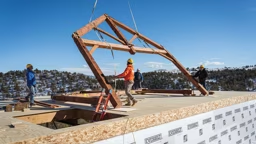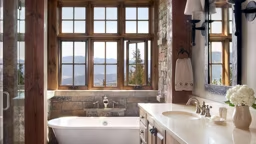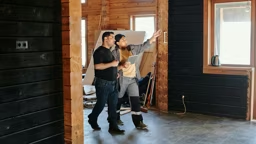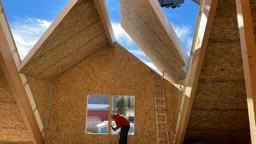
Entering the construction phase of your log and timber home journey starts with one word: process. And it is a process.
All too often people believe it’s a straightforward process — leading with A, then moving to B, then C, etc., but it’s not that perfect, nor is it quite that systematic. There are different hurdles along the way, such as material delays or availability of trade contractors, that take builders in many different directions and require them to adjust.
Often, the best way to approach a lengthy process is to focus on the result — owning and enjoying your custom home. However, the result is the 50,000-foot view. Going back to the process, it takes many smaller, finite steps, and to get there, you need a solid plan. That starts by addressing three key questions that will move the project forward:
1. Where am I building?
Your site conditions will undoubtedly affect, if not dictate, what the construction plan is. As you excavate, there will be issues you need to overcome. Some can be predicted (like site clearing so you can capture the best views or where to drill for a well); others cannot (such as encountering bedrock as the builder starts to dig the foundation). Having an accurate survey and understanding the property will impact the design, which brings us to #2.
2. How should I approach the design?
To start, and I can’t stress this enough, don’t rush. Take the time to understand the layout room by room, and then envision yourself living within those spaces. Focus on the details no matter how small, because if your plan is tight, the construction process will be monumentally easier.
Even I’ve been guilty of not taking the time to think the layout through, though I know better. Example: I’m building a spec house right now. As I was walking the job the other day, I realized the laundry room size and layout are terrible — and I designed it! While I had scrutinized my plan, I didn’t focus on this area, and it didn’t come out the way I thought it would. So, on site I had to expand it by 2 feet on one side and 1 foot on the other, and what did that do? It stopped construction in its tracks until I fixed the issue, reframed the laundry room, moved plumbing pipe, adjusted the wiring plan, etc. It’s costing me a three-week delay and the hassle of rescheduling various trade subcontractors … if they’re available when I need them. The ripple effect can be crippling.
As builders we know that there’s always going to be some changes on a job site, whether it’s due to terrain, budget, what have you. We’re prepared for it. But rushing through the design causes more unnecessary mistakes than any other phase of the build. Take the time to get it right.
3. What’s my budget?
Your budget will drive the process from start to finish. If you have a tight, rigid budget, construction could take longer because you’ll need to be frugal with the decisions you make if something out of the scope of the build arises. If you push forward and choose to go over budget, it could derail the process toward the end; for instance, not having enough money to finish certain tasks, such as building out a deck or installing landscaping, within the time you intended.
Conversely, if you have a stockpile of discretionary funds, then you can literally pay your way to a faster process by dealing with overages immediately, hiring more people to do the job faster or purchasing materials on the spot rather than having to save for them.
For better or for worse, throughout the construction process, you must constantly refer to the budget and make sure everything is lining up.
The Emotional Process
Building a custom log or timber home brings joy — that’s for sure. It’s an exciting achievement. But, decision-making on this scale also can incite anxiety. So in addition to handling the literal construction progression, there’s an emotional process that must be managed.
As any contractor worth his or her salt will tell you, part of managing a job is managing the client’s emotions, concerns and expectations. It’s important to communicate to clients that there will always be interruptions on a job site, and some have nothing to do with construction itself. Sometimes a paperwork delay related to permitting or inspections prevents the build from moving forward as planned. Sometimes it’s weather or backordered materials. And builders are human – sometimes mistakes are made and fixing them puts a dent in the schedule.
Yes, we builders know it’s frustrating to you — it frustrates us, too! But there’s a role you can play to make the process smoother: Keep emotion off the job site. If something is bothering you, take the time to collect your thoughts, stay calm and be direct while raising the issue at hand. Then, be patient as the problem is addressed.
In turn, a contractor who takes the time to get to know his/her clients outside the realm of the job can anticipate how that client may react to certain situations and potentially resolve them before they escalate to problems.
Cool heads make good decisions. Building a home is a collaborative process and by working together, you and your builder can ensure that it will run smoothly.
Dan Mitchell is a log and timber home builder and educator, as well as president-elect of the Tennessee State Home Builders Association. He owns Eagle CDI, based near Knoxville.











